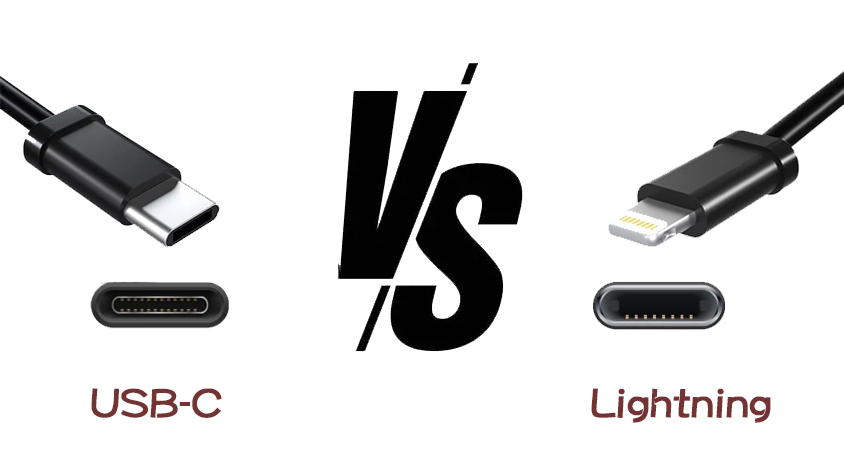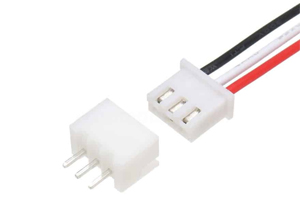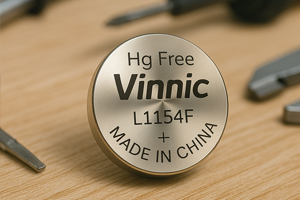Connecteurs USB-C et Lightning : quelle est la différence et quand utiliser chacun d'eux ?
Author:admin Date: 2025-04-30 08:34 Views:662
Lightning Vs USB-C! (Comparison) (Review)
USB-C vs. Lightning is a common debate as people compare the functionality and performance of the two types of connectors. USB-C has more compatibility since it works with different devices from various manufacturers, compared to Lightning, which is primarily designed for Apple products. Below, we delve deeper into the comparison to learn more about the differences and when to use each one, helping you to gain a better understanding.

What is a USB-C Connector?
USB-C remains a popular choice for connectors in the industry right now. It is known for being versatile, as it can be used to transmit data and power using the same cable. Having the reversible connector means it can be plugged either way. This eliminates the need to flip the connector before inserting it into a device, unlike previous generations of USB connectors.
Many manufacturers have adopted the use of this connector thanks to its many benefits. You should expect to find it in many modern devices, including smartphones, computers, and many others.
What is a Lightning Connector?
When comparing Lightning vs. USB-C, we also need to understand what the Lightning connector is. Unlike USB-C, which is common in various types of devices, the Lightning connector is designed for Apple products, such as iPhones, iPads, and iPods. It is an 8-pin connector that offers a versatile and durable connection for Apple devices.
The Lightning connector is best used for charging Apple devices and transferring data between devices.
USB-C and lightning connectors can only be connected to each other using the USB-C to Lightning adapter. This makes it possible to use your Apple devices, if necessary, with other devices that use USB-C connectors.
Main Differences Between USB-C and Lightning
We want to focus more on the features that are different between the two connectors so that you can choose after having all the information. We will look at various aspects of these connectors and see which one stands out. Let us get into it.
Data Transfer Rate
In the matter of USB-C vs. Lightning cable data transfer speeds, we see a huge difference between the two. USB-C is capable of transferring data at speeds of up to 40 Gbps, compared to Lightning cables, which can only transfer data at 480 Mbps.
USB-C can achieve such speeds because it now supports USB4. This is the latest USB specification, which offers more performance and speed.
Also, Apple does not release all the details about its proprietary technology used in making the Lightning cables and connectors. Because of this, more device manufacturers have adopted USB-C, making it a more advanced standard with faster data transfer speeds.
Compatibility
Ever since Lightning was released, we have always known it is meant for Apple devices only. This means those who might want to use it but do not have Apple devices are limited in terms of choices. So, you can expect to find such a connector only on Apple devices, such as phones, keyboards, trackpads, AirPods, and more.
It is not the same with USB-C. Many manufacturers adopted the use of USB-C technology, making it more compatible. You can expect to get more devices with USB-C than Lightning in the market right now.
We have seen Apple now transitioning from Lightning to USB-C in some of its products. This is mostly for iPhones and other mobile devices. This transition has made it possible to find Apple products that are more compatible with other devices.
Power Delivery
Power delivery is important because you need to use connectors and cables to power devices. USB-C offers a better power delivery rate compared to the Lightning cables. As standard, the maximum current that Lightning can carry is 2.4A, while USB-C can do 3A, with support for 5A also available.
This is why you will find USB-C connectors that are capable of fast charging, as they can keep up with the power delivery needed for the process.
Apple knows that Lightning does not support fast charging. USB-C to Lightning adapter cables are now available to provide this technology to Apple devices. Some allow for charging your iPhone battery to 50% in just 30 minutes.
Durability
Ease of use and durability are also important factors to consider when choosing between the two. Both USB-C and Lightning have good durability, and their ends are reversible, making it easy to plug them into devices.
Both come with chips that ensure a good and strong connection vital for stable current for charging and also better data transfer speeds.
As for durability, it all comes down to the usability. Some people may claim that Lightning breaks faster, while others claim the opposite. However, more people feel the Lightning connection is more secure than USB-C, but it might not be enough to edge it out.
It is recommended to get either cable from a trusted manufacturer that offers the best durability in cables. Also, practice proper storage of your cable to ensure the best durability as well.
Similarities Between USB-C and Lightning
Even when looking at the differences between USB-C and Lightning, there are some notable similarities between the two. The first one is the reversible design. This means you can easily plug in the cables without worrying about their orientation.
The charging and data transfer speeds are possible with each cable and connector. You do not need separate cables for charging and data transfer.
Lightning and USB-C cables can both be used for audio output. This makes it possible to connect with external devices such as speakers and headphones.
Pros and Cons
Pros of USB-C
- High-speed data transfer
- Impressive fast charging capability
- Highly versatile connectors and cables
- Reversible design
- Compact size for portability
- Comes with better support for the future
Cons of USB-C
- Can be fragile
- Incompatible with older devices
- Lack of standardization in implementation
Pros of Lightning
- Secure connection
- Compact design
- Standardized for Apple devices
- Quite durable connectors and charges
Cons of Lightning
- Slower data transfer rate
- May have durability issues
- Lack of versatility
When To Use Each Type
We have already seen the differences between the two cables and connectors. You might be wondering when you can use each of these technologies.
USB-C is compatible with modern devices that feature this port. You can always expect to find more compatibility when seeking devices that use USB-C connectors. Also, it is a great choice for those seeking fast charging, high-speed data transfer, and versatility, among many other benefits.
As you already know, using the Lightning cable and connector is meant for Apple devices. You would use them exclusively for charging these devices, transferring data, and connecting to external devices.
Troubleshooting USB-C and Lightning Cable Issues
USB-C and Lightning cables might have issues from time to time. It depends on how you use them. However, we have some tips below for you to consider so you can continue using the devices.
- Check for physical damage. Inspect for signs of damage, such as broken wires, bent connectors, and fraying. Replace such cables to get good performance always.
- Clean your ports and connectors to remove dust, lint, and other debris. This ensures a good and secure connection each time. Use a soft brush or a microfiber tool to clean the ports.
- Test with different cables to see if the issue is with the cable or the device itself. Sometimes, you might replace a cable, thinking it is bad, only to find out later it was the device.
- Check for compatibility. Make sure the cable you are using is compatible with the device. For example, you cannot use a USB-C for older Apple devices unless you get a special adapter.
- Restarting your device can sometimes resolve the issues you’re having. So, a reboot can be essential for dealing with software glitches that affect charging and connectivity issues.
Conclusion
In terms of USB-C vs. Lightning, we see that USB is superior to Lightning in every way. This is because it is better in terms of compatibility, power delivery, data transfer speeds, and more. Even Apple is transitioning its devices to start using USB-C connectors and cables. It just shows how good the connector is in terms of working with different devices. Make sure to always take good care of your cables for them to keep delivering a good performance.
Veuillez envoyer une demande de devis, nous vous répondrons immédiatement.
Questions fréquemment posées
Which one is faster, USB-C or Lightning?
USB-C stands out for being faster, as it can deliver data transfer speeds of up to 40 Gbps with USB4. Even the charging speeds are better than the Lightning connector. Lightning is limited to 480 Mbps, which is USB 2.0 speed.
Is Apple phasing out Lightning cables?
Yes. Apple has confirmed that it will switch to USB-C with its new devices. It is expected that older devices will still rely on using Lightning connectors for now.
Does USB-C support fast charging for iPhones?
Yes. iPhone 15+ can support fast charging speeds compared to Lightning, which was doing a maximum of 20W. Adopting the USB-C connector has made it possible to charge iPhones up to 27W.
Can Lightning accessories work with USB-C iPhones?
Yes, they can work, but you will need a special USB-C to Lightning adapter. This is mostly for headphones, docks, and other devices.


